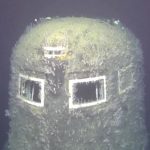Francesco Forgione
When Francesco Forgione was just 5-years-old, he knew what he wanted to do with his life. He was one of the five surviving children born to his parents, Grazio and Maria. His family was very religious and active in the Catholic church. The family lived 60 miles from Naples, in Pietrelcina. They attended church and prayed the rosary every day. In 1897, Francesco had only been in public school for three years, when he felt that it was time to leave academia behind. After hearing a Capuchin friar speak in the countryside, he wanted to be one too but not yet a paranormal priest.
Supportive Parents
His parents were supportive of what their son wanted, so they took him to a nearby Franciscan to see if their son could join. The friars there said that they would be happy to welcome Francesco, as long as he underwent further education. Grazio moved to the United States to get work so that he could pay for his son’s private tutoring. Francesco understood the sacrifice that his father made for him, and he didn’t let him down. He met each of the academic benchmarks set for him, and on January 6, 1903, he entered the Capuchin Order.
Making Vows and Getting Sick
Two weeks after he entered the order, Francesco adopted the Franciscan lifestyle. He changed his name to Friar Pio and paid homage to Pope Pius I. He took a vow of chastity, poverty, and obedience. Next, he started taking steps to become a priest. He began studying in Umbria. About two years after joining the Capuchin Order, he got sick. He began experiencing the symptoms of insomnia, exhaustion, migraines, and fainting. He was just 17-years-old at the time and was unable to digest any food other than milk or cheese. He also vomited constantly.
Strange Behavior
Around the time Friar Pio became ill, his peer noticed strange changes in his behavior. While praying, they said he appeared to be in a daze. One friar claimed to have seen him levitating from the ground and experiencing religious ecstasy. Despite this, Friar Pio’s health didn’t improve. His superiors hoped that fresh air would heal him, so they transferred him to a convent in the mountains. Unfortunately, he didn’t get any better, so they sent him home to Pietrelcina.
Priesthood
When Friar Pio returned home, his condition didn’t change. Even though he was very ill, he managed to make his solemn profession of faith in 1907, and in 1910, he became an ordained priest, soon a paranormal priest. His first Mass was a week later, but he had to remain in his family’s care for six more years.
Moving
In September 1916, Friar Pio, who was now called, Padre Pio, returned to the Capuchin Order. He moved to the Gargano Mountains, where he and six other friars served the San Giovanni Rotondo community. Other than the time that he served in World War I, he remained at this post until his death.
After the War
After World War I, Padre Pio’s influence had grown in the south of Italy. As the people were trying to rebuild after the war, they turned to Pio as a source of hope and inspiration. Around this time, he started to exhibit behavior that he would be known for long after his death, a paranormal priest. Some of the claims caused a stir in the Catholic Church. According to his followers, he had the ability to heal his followers. Gemma di Giorgi was born without eyesight because she had no pupils. After Padre Pio met her, she was able to see, despite her condition. Signora Massari had been deaf for over 20 years, and during Pio’s Mass, she heard him speak. She was even able to hear the church bells ringing.
Converting and Stigmata
Pio had a reputation of converting people to Catholicism. Most of the time, it was people who wanted to be healed. When a Jewish man went to him to cure his blindness, Pio told him that he couldn’t help until the man was baptized into the Catholic Church. After the baptism, the man was able to see. Around the same time, he suffered the stigmata, which are markings and bleeding in the same place as Christ’s crucifixion wounds. When word spread, people, even non-believers, wanted to see him. In the 1920s, the Vatican became fed up with the attention, and they stopped him from giving Mass. They were worried that his wounds were self-inflicted. The Vatican ordered his wounds to be closed, and after surgery, they still looked the same. Blood tests revealed nothing abnormal, and his hands still hadn’t healed.
Dismissal and Death
In the mid-60s, Pope Paul VI dismissed all of the allegations against Pio and believed in his stigmata. Sadly, it was at the same time that he died at the age of 81. Shortly after, the archbishop of Manfredonia started an investigation to see if Pio could become a saint.
Unchanged
Since he passed, thousands traveled to the Vatican to view the decades-old body of this paranormal priest. Even though he died several decades ago, he hasn’t changed. His body has remained completely preserved and has shown no signs of decomposition. His wispy beard even looks the same. Most people believe that it truly is a miracle.


